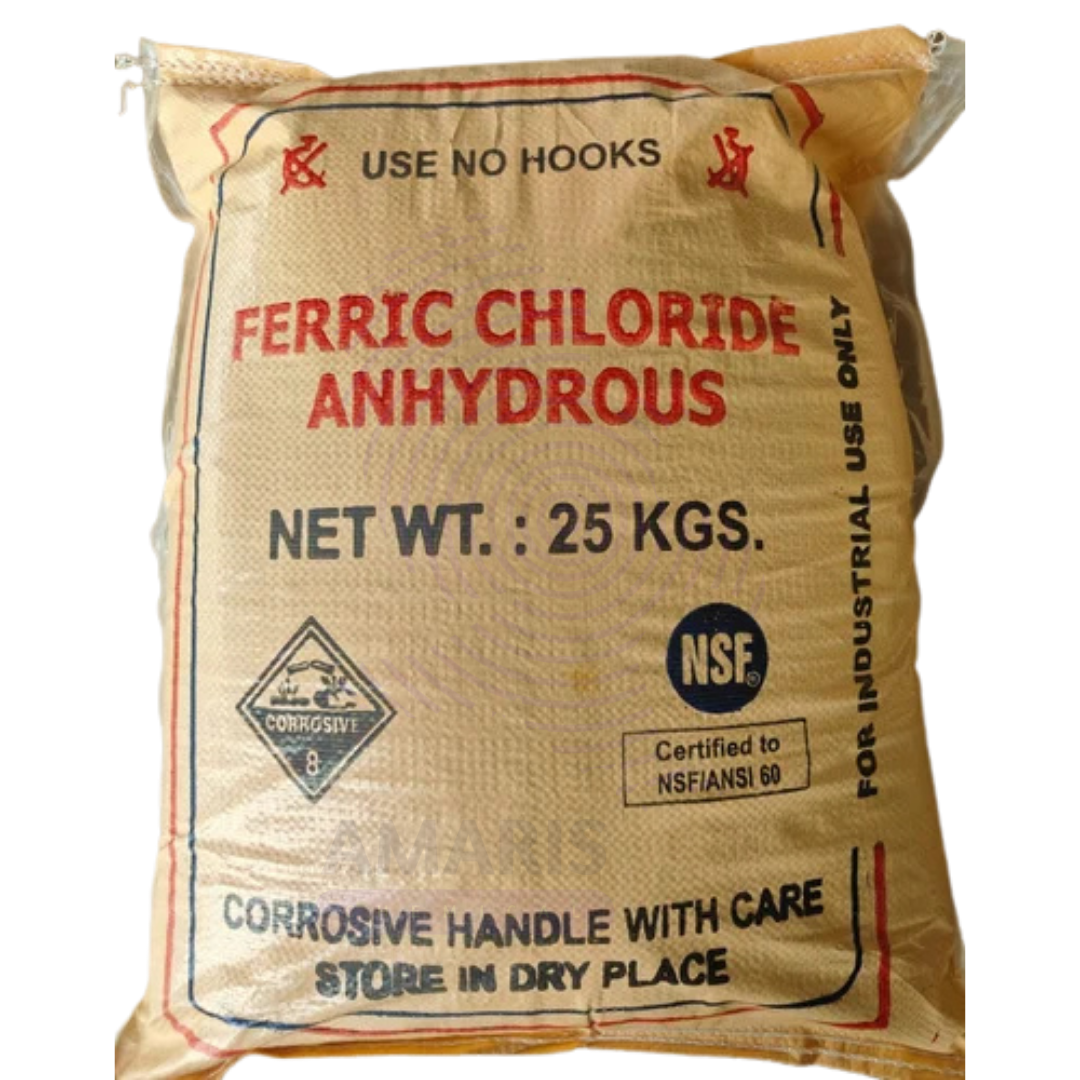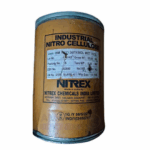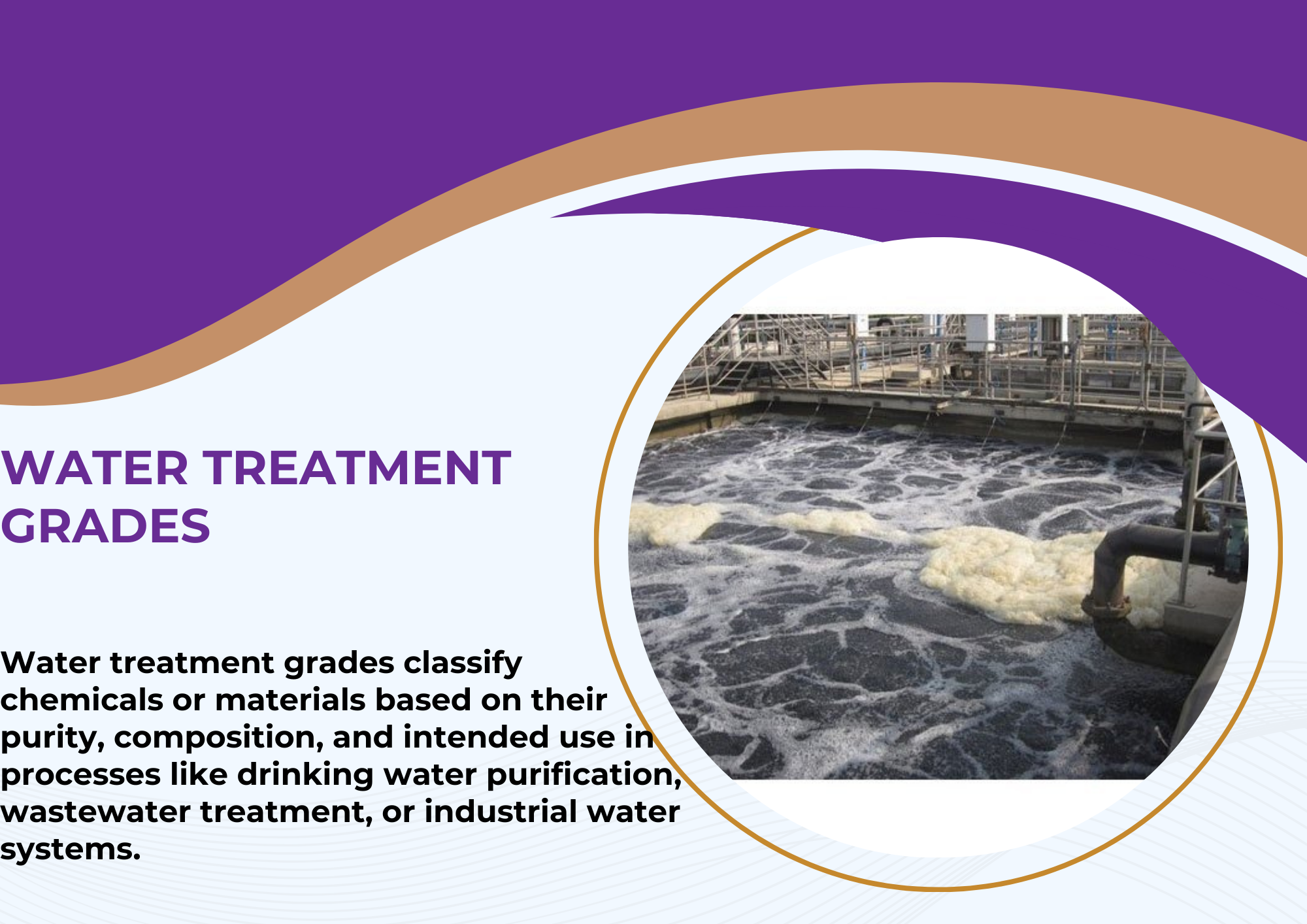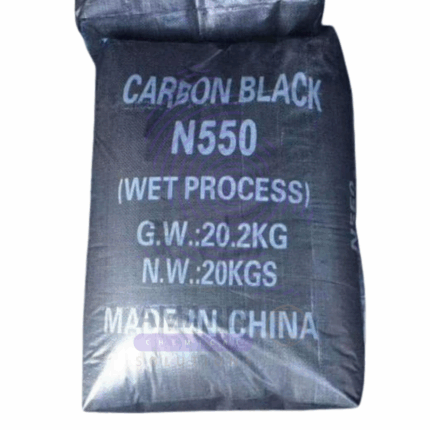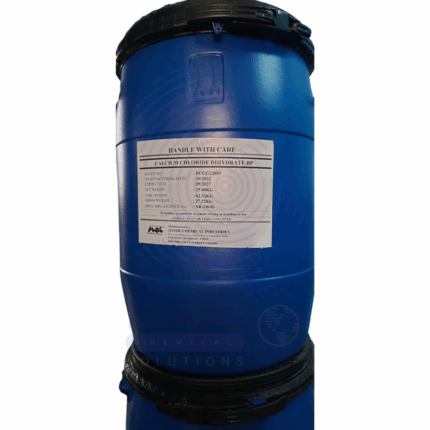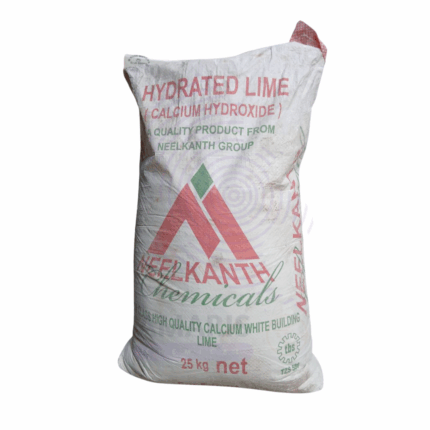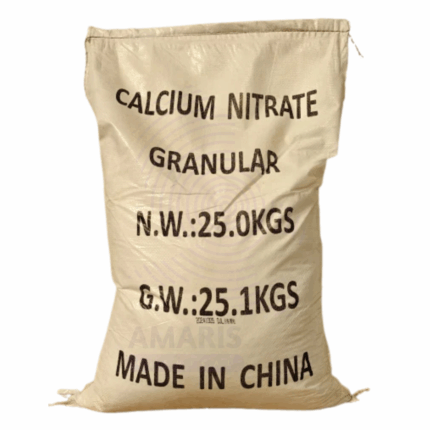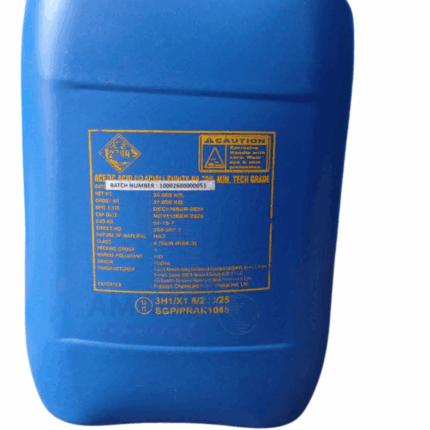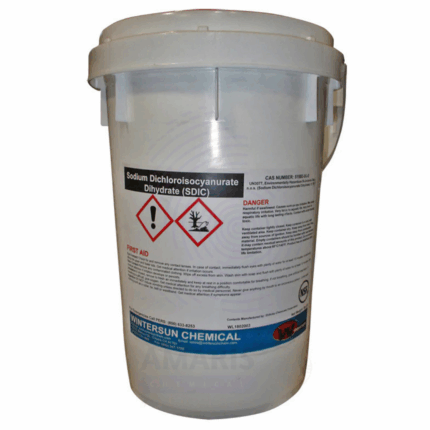Ferric Chloride Anhydrous
$ 1.15 Original price was: $ 1.15.$ 1.02Current price is: $ 1.02.
Whatsapp Order
Ferric Chloride Anhydrous (FeCl₃) is a dark brown to black crystalline solid with a metallic luster. It is a highly corrosive, hygroscopic inorganic salt widely used as a chemical reagent, catalyst, and coagulant. In its anhydrous form, ferric chloride is free of water and has a high purity of approximately 98%. It readily dissolves in water, releasing heat and producing acidic solutions. Ferric chloride is valued for its strong Lewis acid properties, making it effective in a variety of industrial, laboratory, and environmental applications. It is commonly supplied as a solid crystalline powder or lumps and should be handled with care due to its corrosive nature.
Description
Table of Contents
Toggle
Ferric Chloride Anhydrous
Primary Uses
- Water and Wastewater Treatment
- Used extensively as a coagulant and flocculant to remove suspended solids, organic matter, and phosphates from water and sewage.
- Helps in controlling odors and improving water clarity.
- Effective in industrial effluent treatment plants for heavy metal and contaminant removal.
- Chemical Synthesis and Industrial Processes
- Acts as a catalyst or reagent in organic and inorganic synthesis, including Friedel-Crafts reactions, chlorination, and oxidation processes.
- Used in etching and surface treatment of metals, especially in printed circuit board (PCB) manufacturing for copper etching.
- Employed in the production of pigments, dyes, and other iron-containing chemicals.
- Electronics and Metal Processing
- Applied in metal cleaning and pickling to remove rust and oxide layers.
- Used in electroplating baths and as a mordant in textile dyeing.
- Laboratory and Analytical Applications
- Serves as a reagent for qualitative and quantitative chemical analysis, particularly for detecting phenols and other organic compounds.
- Used in the preparation of iron salts and complexes.
Secondary Uses
- Catalyst in Polymerization
- Utilized as a catalyst in polymer production and modification processes.
- Pharmaceutical Industry
- Employed in trace amounts in certain pharmaceutical formulations and synthesis processes.
- Environmental Applications
- Used in sludge dewatering and stabilization processes.
- Helps in odor control and reduction of biological oxygen demand (BOD) in waste streams.
- Used in sludge dewatering and stabilization processes.
KEY PRODUCT FEATURES
1. Basic Identification Attributes
- Chemical Name (IUPAC): Iron(III) chloride
- Common/Trade Name: Ferric Chloride 98% Anhydrous
- CAS Number: 7705-08-0
- HS Code: 2827.39.00
- Molecular Formula: FeCl₃
- Synonyms: Iron trichloride, ferric trichloride, iron(III) chloride
2. Physical & Chemical Properties
- Physical State: Crystalline solid (granules, lumps, or powder)
- Color & Odor: Dark brown to black; no distinct odor but corrosive fumes released on contact with moisture
- Melting Point: Approximately 306°C (decomposes)
- Boiling Point: Sublimes at about 315°C
- Density: Approx. 2.9 g/cm³
- Solubility: Highly soluble in water with exothermic dissolution; reacts vigorously with water
- pH (aqueous solution): Strongly acidic (pH ~1–2)
- Stability: Stable when stored dry and away from moisture; hydrolyzes readily on contact with water producing hydrochloric acid vapors
3. Safety & Hazard Attributes
- Hazard Class (GHS): Corrosive (Skin corrosion/irritation - Category 1), Acute toxicity, Hazardous to aquatic environment
- Toxicity: Corrosive to skin, eyes, respiratory tract; harmful if swallowed or inhaled
- Exposure Limits: OSHA PEL = 1 mg/m³ (iron oxide fume as a guideline); local limits may vary
4. Storage & Handling Attributes
- Storage Conditions: Store in tightly sealed containers in a cool, dry, well-ventilated area away from moisture and incompatible materials
- Container Type: Corrosion-resistant containers, typically plastic-lined drums or polyethylene bags
- Shelf Life: 1–2 years if stored properly in moisture-free conditions
- Handling Precautions: Use protective equipment; avoid dust formation and moisture contact; handle in well-ventilated areas or under fume extraction
5. Regulatory & Compliance Attributes
- REACH Registration: Registered under EU chemical regulations
- Transportation: Classified as hazardous material; subject to regulations for corrosive substances
- Waste Disposal: Dispose of in accordance with local environmental regulations; neutralize before disposal if possible
6. Environmental & Health Impact
- Biodegradability: Inorganic salt, does not biodegrade but reacts with environmental components
- Ecotoxicity: Toxic to aquatic life; avoid release to waterways
- Bioaccumulation: Not expected to bioaccumulate
- Carcinogenicity/Mutagenicity: Not classified as carcinogenic or mutagenic
SAFETY HANDLING PRECAUTIONS
Safety Handling Precautions
- Personal Protective Equipment (PPE):
- Chemical-resistant gloves (e.g., neoprene or nitrile)
- Safety goggles or face shield
- Protective lab coat or chemical-resistant clothing
- Respiratory protection (dust mask or respirator) in dusty or fume-prone environments
- Handling Guidelines:
- Avoid inhalation of dust and fumes
- Use under a fume hood or in well-ventilated areas
- Prevent contact with skin and eyes
- Avoid moisture exposure to prevent hazardous hydrolysis
- Storage Measures:
- Keep container tightly closed and dry
- Store away from bases, water, and strong oxidizers
- Protect from humidity and moisture
- Hygiene Practices:
- Wash hands thoroughly after handling
- Avoid eating, drinking, or smoking in handling areas
- Clean equipment and surfaces regularly
First Aid Measures
- Inhalation:
- Move affected person to fresh air immediately
- Seek medical attention if respiratory irritation or distress occurs
- Skin Contact:
- Remove contaminated clothing immediately
- Wash affected skin thoroughly with soap and water
- Seek medical attention for burns or persistent irritation
- Eye Contact:
- Rinse eyes immediately with plenty of water for at least 15 minutes
- Seek urgent medical attention
- Ingestion:
- Do not induce vomiting
- Rinse mouth with water
- Seek immediate medical assistance
Firefighting Measures
- Fire Hazards:
- Non-flammable but decomposes at high temperatures releasing corrosive and toxic fumes including hydrochloric acid and chlorine gases
- Extinguishing Media:
- Use dry chemical, foam, or carbon dioxide (CO₂) extinguishers
- Avoid using water directly on dry material as it may release heat and corrosive vapors
- Special Precautions:
- Firefighters should wear full protective gear including self-contained breathing apparatus
- Prevent contaminated runoff from entering water bodies
- Decomposition Products:
- Hydrogen chloride gas, chlorine gas, iron oxides, and other toxic fumes
Related products
Activated Carbon
Activated carbon is a highly porous, adsorptive material processed to have an exceptionally large surface area (typically 500-1500 m²/g) through thermal or chemical activation of carbon-rich source materials. This versatile adsorbent exists in powdered (PAC), granular (GAC), pelletized, and extruded forms, with pore structures specifically engineered for different applications ranging from water purification to gas treatment. Its extended surface area and complex pore network (micropores <2nm, mesopores 2-50nm, macropores >50nm) enable superior physical adsorption of contaminants through van der Waals forces, as well as chemical interactions with surface functional groups.
Calcium Chloride
Calcium Chloride is an inorganic salt composed of calcium and chlorine with the chemical formula CaCl₂. It typically appears as a white crystalline solid or granular powder, highly soluble in water and exhibiting strong hygroscopic properties. Calcium Chloride is widely used for its moisture-absorbing ability, de-icing, dust control, and as a firming agent in food processing. It finds extensive applications across industrial, pharmaceutical, agricultural, and food sectors due to its efficacy in modifying physical and chemical properties of products and environments.
Calcium Chloride Dihydrate
Calcium Chloride Dihydrate (CaCl₂·2H₂O) is a hydrated form of calcium chloride, appearing as white crystalline granules or flakes containing two molecules of water of crystallization. It is highly soluble in water and exhibits strong hygroscopic and deliquescent properties. This compound is widely used in industrial, pharmaceutical, food, and agricultural sectors due to its moisture absorption, de-icing, dust control, and calcium supplementation capabilities. Compared to anhydrous calcium chloride, the dihydrate form has lower hygroscopicity but is easier to handle and store.
Calcium Hydroxide Hydrated Lime
Calcium Hydroxide Hydrated Lime, commonly known as Hydrated Lime or Slaked Lime, is an inorganic compound with the chemical formula Ca(OH)₂. It appears as a white, odorless, powder or crystalline solid. It is produced by treating quicklime (calcium oxide) with water in a process called slaking. Calcium Hydroxide is moderately soluble in water, forming a strongly alkaline solution known as limewater. It is widely used in construction, environmental, chemical, agricultural, and water treatment applications due to its caustic, neutralizing, and flocculating properties.
Calcium Nitrate
Calcium Nitrate is a highly soluble, white crystalline salt composed of calcium and nitrate ions. It is commonly available as a tetrahydrate (Ca(NO₃)₂·4H₂O). Known for its excellent solubility in water, calcium nitrate is widely used as a fertilizer providing both calcium and nitrogen to plants. It improves soil structure, enhances nutrient uptake, and prevents disorders such as blossom-end rot in fruits. Beyond agriculture, calcium nitrate serves in wastewater treatment, concrete acceleration, and industrial chemical processes.
Glacial Acetic Acid Tech grade
Glacial Acetic Acid Tech grade is a clear, colorless liquid with a pungent vinegar-like odor. It is a less refined form of acetic acid primarily used for industrial and technical applications rather than food or pharmaceutical uses. Typically available in concentrations ranging from 80% to glacial (99-100%), it serves as a crucial chemical reagent, solvent, and intermediate in various industrial processes.
Poly Aluminum Chloride (PAC)
Poly Aluminum Chloride (PAC) is an inorganic polymer coagulant used extensively for water treatment and purification. It is a highly efficient flocculating agent, derived from aluminum salts and partially neutralized with chloride, forming polymerized aluminum complexes. PAC is preferred over traditional alum for its rapid floc formation, broader pH range, and lower sludge production. Available in both liquid and powder forms, it is widely applied in municipal, industrial, and commercial sectors for clarification, separation, and purification processes.
Sodium Dichloroisocyanurate
Sodium Dichloroisocyanurate (NaDCC) is a white crystalline powder used primarily as a disinfectant, sanitizer, and biocide. It is a stable, slow-releasing chlorine compound effective against bacteria, viruses, and fungi. Widely applied in water treatment, swimming pool sanitation, food processing, and healthcare, it provides long-lasting antimicrobial activity. Its high chlorine content and ease of handling make it an essential chemical for hygiene and sterilization applications.


 Preservatives(food)
Preservatives(food) Flavor Enhancers
Flavor Enhancers Acidulants
Acidulants Sweeteners
Sweeteners Antioxidants
Antioxidants Colorants(food)
Colorants(food) Nutraceutical Ingredients (food)
Nutraceutical Ingredients (food) Nutrient Supplements
Nutrient Supplements Emulsifiers
Emulsifiers
 Collectors
Collectors Dust Suppressants
Dust Suppressants Explosives and Blasting Agents
Explosives and Blasting Agents Flocculants and Coagulants
Flocculants and Coagulants Frothers
Frothers Leaching Agents
Leaching Agents pH Modifiers
pH Modifiers Precious Metal Extraction Agents
Precious Metal Extraction Agents
 Antioxidants(plastic)
Antioxidants(plastic) Colorants (Pigments, Dyes)
Colorants (Pigments, Dyes) Fillers and Reinforcements
Fillers and Reinforcements Flame Retardants
Flame Retardants Monomers
Monomers Plasticizers
Plasticizers Polymerization Initiators
Polymerization Initiators Stabilizers (UV, Heat)
Stabilizers (UV, Heat)
 Antifoaming Agents
Antifoaming Agents Chelating Agents
Chelating Agents Coagulants and Flocculants
Coagulants and Flocculants Corrosion Inhibitors
Corrosion Inhibitors Disinfectants and Biocides
Disinfectants and Biocides Oxidizing Agents
Oxidizing Agents pH Adjusters
pH Adjusters Scale Inhibitors( water)
Scale Inhibitors( water)
 Antioxidants(cosmetic)
Antioxidants(cosmetic) Emollients
Emollients Fragrances and Essential Oils
Fragrances and Essential Oils Humectants
Humectants Preservatives
Preservatives Surfactants(cosmetic)
Surfactants(cosmetic) Thickeners
Thickeners UV Filters
UV Filters
 Fertilizers
Fertilizers Soil Conditioners
Soil Conditioners Plant Growth Regulators
Plant Growth Regulators Animal Feed Additives
Animal Feed Additives Biostimulants
Biostimulants Pesticides (Herbicides, Insecticides, Fungicides)
Pesticides (Herbicides, Insecticides, Fungicides)
 Active Pharmaceutical Ingredients (APIs)
Active Pharmaceutical Ingredients (APIs) Excipients
Excipients Solvents(pharmaceutical)
Solvents(pharmaceutical) Antibiotics
Antibiotics Antiseptics and Disinfectants
Antiseptics and Disinfectants Vaccine Adjuvants
Vaccine Adjuvants Nutraceutical Ingredients (pharmaceutical)
Nutraceutical Ingredients (pharmaceutical) Analgesics & Antipyretics
Analgesics & Antipyretics
 Analytical Reagents
Analytical Reagents Solvents(lab)
Solvents(lab) Chromatography Chemicals
Chromatography Chemicals Spectroscopy Reagents
Spectroscopy Reagents microbiology-and-cell-culture-reagents
microbiology-and-cell-culture-reagents Molecular Biology Reagents
Molecular Biology Reagents Biochemical Reagents
Biochemical Reagents Inorganic and Organic Standards
Inorganic and Organic Standards Laboratory Safety Chemicals
Laboratory Safety Chemicals Specialty Laboratory Chemicals(Special Laboratory Equipment)
Specialty Laboratory Chemicals(Special Laboratory Equipment)
 Demulsifiers
Demulsifiers Hydraulic Fracturing Fluids
Hydraulic Fracturing Fluids Scale Inhibitors(oil)
Scale Inhibitors(oil) Surfactants(oil)
Surfactants(oil) Drilling Fluids
Drilling Fluids
 Dyes and Pigments
Dyes and Pigments Bleaching Agents
Bleaching Agents Softening Agents
Softening Agents Finishing Agents
Finishing Agents Antistatic Agents
Antistatic Agents
 Admixtures
Admixtures Waterproofing Agents
Waterproofing Agents Sealants and Adhesives
Sealants and Adhesives Curing Compounds
Curing Compounds Concrete Repair Chemicals
Concrete Repair Chemicals Anti-Corrosion Coatings
Anti-Corrosion Coatings
 Surfactants(cleaning)
Surfactants(cleaning) Builders
Builders Enzymes
Enzymes Solvents (Cleaning)
Solvents (Cleaning) Fragrances
Fragrances
 Electronic Chemicals
Electronic Chemicals Catalysts
Catalysts Lubricants
Lubricants Photographic Chemicals
Photographic Chemicals Refrigerants
Refrigerants Automotive chemicals
Automotive chemicals Pyrotechnic Chemicals
Pyrotechnic Chemicals
 Biodegradable Surfactants
Biodegradable Surfactants Bio-based Solvents
Bio-based Solvents Renewable Polymers
Renewable Polymers Carbon Capture Chemicals
Carbon Capture Chemicals Wastewater Treatment Chemicals
Wastewater Treatment Chemicals
 Pigments
Pigments Solvents(paint)
Solvents(paint) Specialty Coatings
Specialty Coatings Binders/Resins
Binders/Resins Additives
Additives Driers
Driers Anti-Corrosion Agents
Anti-Corrosion Agents Functional Coatings
Functional Coatings Application-Specific Coatings
Application-Specific Coatings
 Fresh Herbs
Fresh Herbs Ground Spices
Ground Spices Whole Spices
Whole Spices Spice Blends
Spice Blends Dried Herbs
Dried Herbs
 Leavening Agents
Leavening Agents Dough Conditioners
Dough Conditioners Flour Treatments
Flour Treatments Fat Replacers
Fat Replacers Decoratives
Decoratives Preservatives(baking)
Preservatives(baking)
 Plasticizers & Softeners
Plasticizers & Softeners Reinforcing Agents
Reinforcing Agents Adhesion Promoters
Adhesion Promoters Vulcanizing Agents
Vulcanizing Agents Antidegradants
Antidegradants Blowing Agents
Blowing Agents Fillers & Extenders
Fillers & Extenders Accelerators & Retarders
Accelerators & Retarders